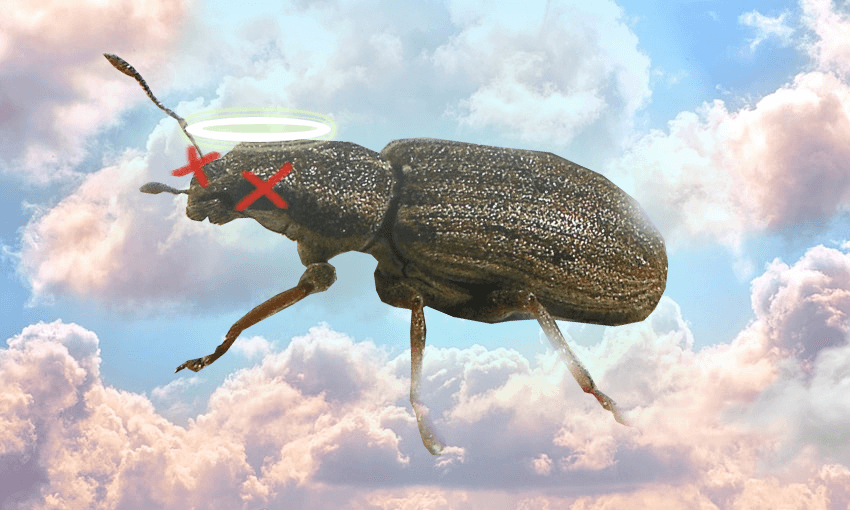The dreaded pea weevil is no more in the Wairarapa, after a successful eradication effort. So why does this matter?
OK, what on earth is a pea weevil?
It’s a type of leaf beetle, so not actually a weevil after all, but the name is the name. Basically it gets into pea plants while they’re growing, and their larvae then ruin the crops by chewing through them. It’s a pest, it wasn’t wanted in the Wairarapa, and now it’s gone.
Gone seems good?
Gone is great. After pea weevils were found in the Wairarapa in 2016, it basically resulted in the industry being halted in the region. Peas couldn’t be grown on farms, nor could they be grown in home gardens, across the entire region. Previously, the Wairarapa had accounted for about 10% of the country’s pea production, so it was pretty serious. The eradication effort relied on the food sources for the critters being removed, and had it failed, it could have put a serious dent in the $130 million pea growing industry.
Can we really be sure it’s gone?
Yes, because with biosecurity risks like this MPI have to be absolutely sure before they declare victory. But now, with no new finds across two whole seasons, biosecurity minister Damien O’Connor says the eradication programme has been a success. He also paid tribute to growers who led a lot of the efforts to get rid of it, saying “we had an outstanding level of awareness and support within the community for our approach to ban the growing of pea plants and pea straw.” Some farmers had to make major sacrifices to make it possible. Checks on pea seeds and exports from the Wairarapa will continue next season just to make sure.
How did the eradication actually work?
Along with the bans on growing peas, there were also bait plants used. The weevils would set up shop inside one of those bait plants, and then be destroyed before they could complete their life-cycle. The eradication was possible in part because the Wairarapa is a relatively geographically isolated region, because of the mountains around it.
What makes this eradication particularly special is that it is believed to be a world-first for this particular pest. There are pea weevils all over the world, and as we can see from the ongoing M Bovis outbreak, once something gets established, it can take an immense amount of time and money to get it out again. That eradication is currently expected to take about a decade, so getting the pea weevil in and out within five years is pretty impressive.
So what happens now?
Well, pea growers can go back to growing them, basically. The ban on pea plants and pea straw has been lifted, both for home gardeners and commercial growers.
And in the intervening couple of years, the prospects for pea growers have become very interesting. That’s because of the explosion in popularity of peas as a source of alternative proteins – if you’ve ever eaten a Beyond Meat Burger, you’ll have tried pea protein. There’s a slight note of irony there for the New Zealand farming industry, in which many meat growers see alternative proteins as an existential threat. But these sorts of food trends are probably inevitable anyway, so for pea growers it’s probably better to be ahead of the curve rather than behind it.
In fact, they are now hugely important crops for sustainability. That’s because of their ability to take nitrogen gas from the air, along with needing much less water to grow relative to other staple crops. They’re immensely versatile and lend themselves very well to being broken down into component parts, like pea starch which can be used to make noodles. And with a bit of butter and a mint leaf, they’re also delicious as a side dish.
